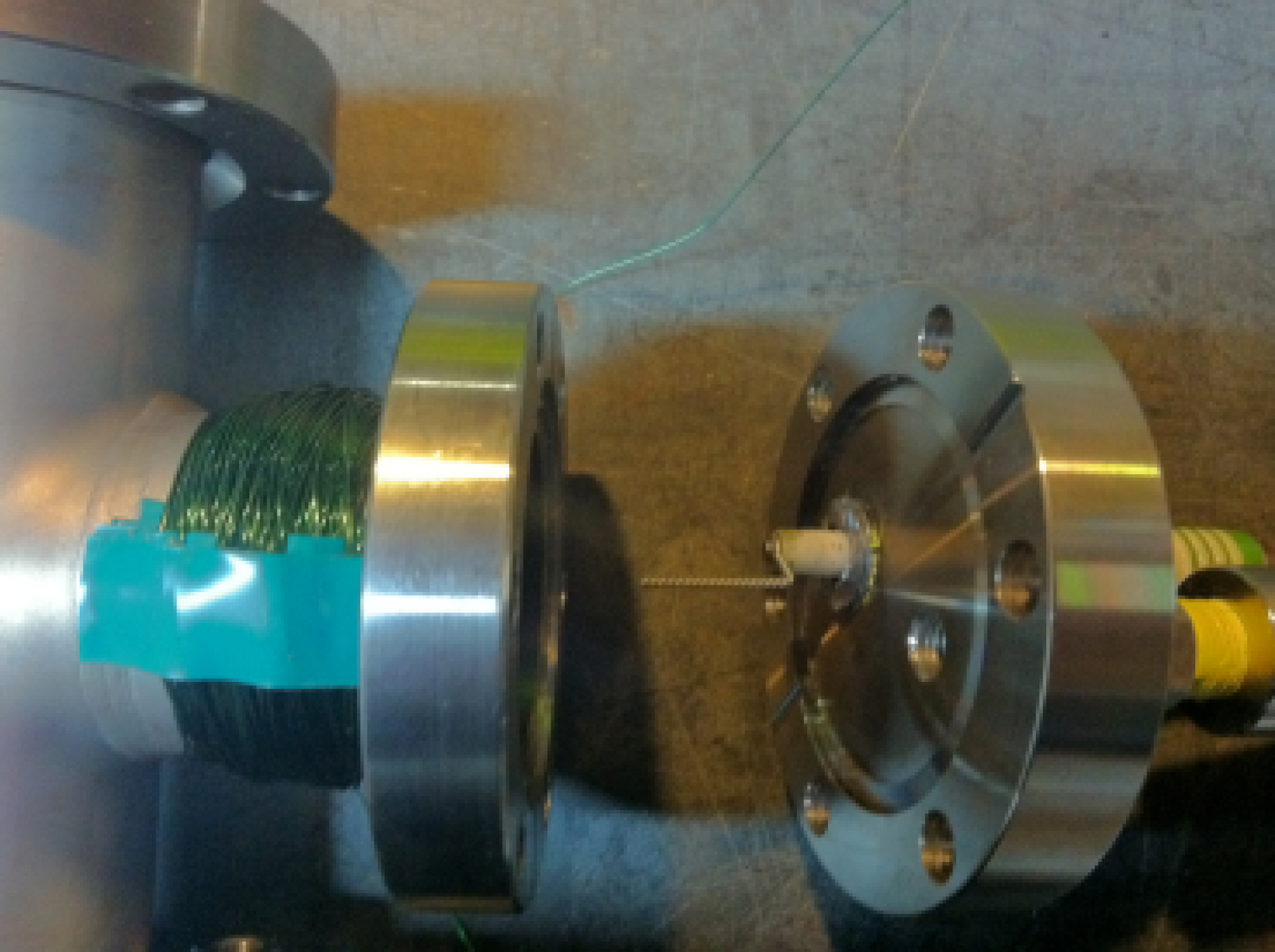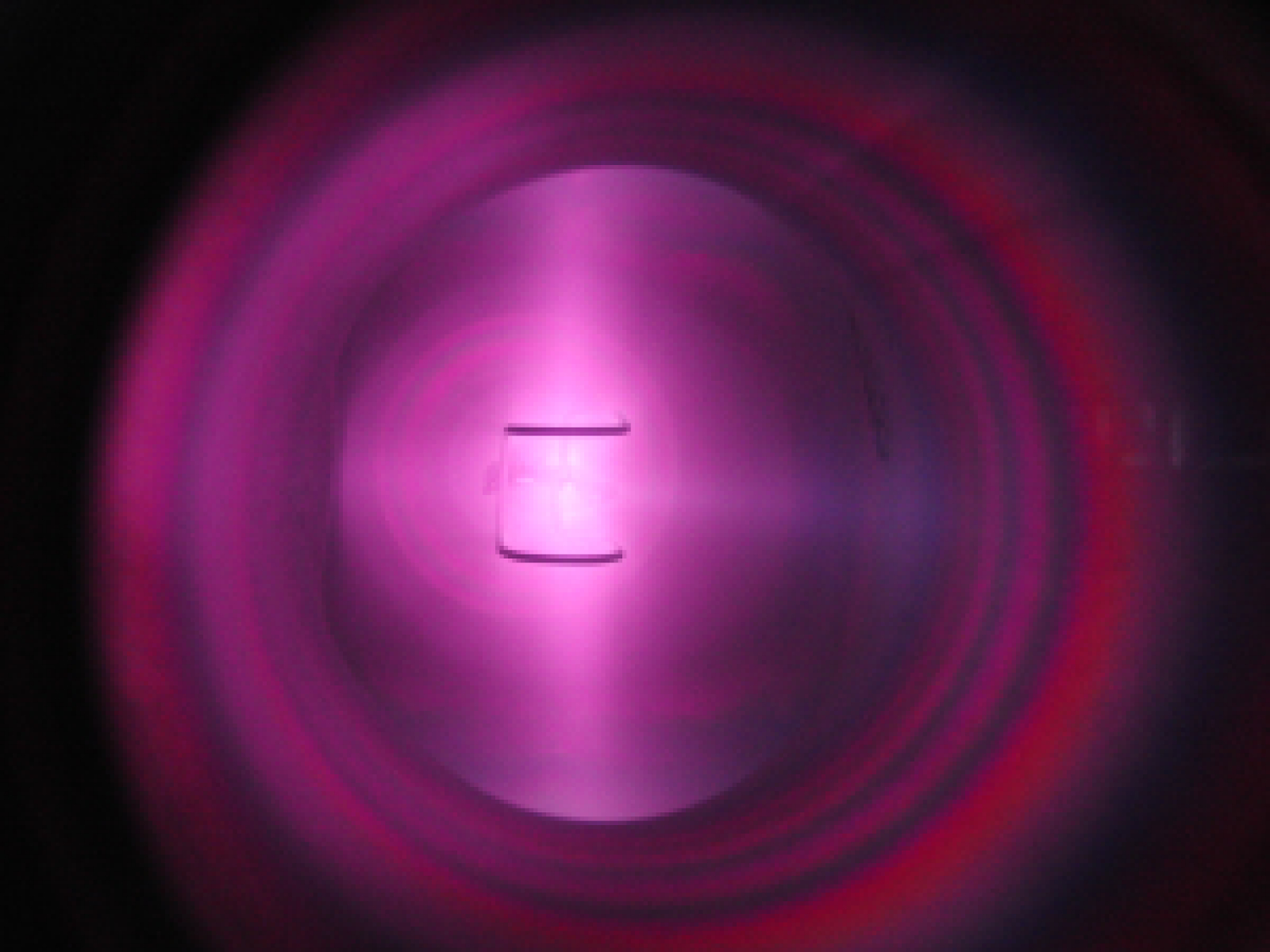Ion Source
I have built a DC magnetron ion source for IEC Reactor MK. III in hopes that it would stabilize reactor operation and perhaps even increase neutron rates.The ion source consists of a .05” diameter x 1” length stainless anode aligned coaxially in a grounded 1.5” diameter stainless tube, acting as a cathode. The anode is connected to a feedthrough constructed from a non-resistor sparkplug threaded into a 2.75” conflat flange. A ¼” NPT nipple is threaded into the same flange to facilitate gas flow into the source and reactor. A 1” long, 175 turn solenoid was wound around the 1.5” diameter flange. See the picture below as a reference. The source uses the following circuit to provide DC power to the anode. The transformer in the diagram is a 15kV, 32mA neon sign transformer with its ground fault interruption circuity removed. The voltage is controlled by a variable autotransformer in the transformer input.The source’s solenoid uses the following circuit as a power supply for the source’s solenoid. The transformer used is a 120v to 12.6v 3A step down transformer, despite the diagram indicating that it is a step up transformer. The 72 ohm resistor in the diagram is a 200W lightbulb. The allows ~2.5A to flow through the solenoid, giving a field of 495 gauss.
The source uses the following circuit to provide DC power to the anode. The transformer in the diagram is a 15kV, 32mA neon sign transformer with its ground fault interruption circuity removed. The voltage is controlled by a variable autotransformer in the transformer input.The source’s solenoid uses the following circuit as a power supply for the source’s solenoid. The transformer used is a 120v to 12.6v 3A step down transformer, despite the diagram indicating that it is a step up transformer. The 72 ohm resistor in the diagram is a 200W lightbulb. The allows ~2.5A to flow through the solenoid, giving a field of 495 gauss. During operation, current is passed through the solenoid, and a voltage applied to the anode. Electrons are emitted from the anode due to field emission, and travel towards the cathode of the source. However, as the solenoid’s magnetic field’s lines of force are coaxial with the cathode and hence at right angles to the electron’s paths, the Lorentz force acting on the electrons causes them to orbit the anode as they travel towards the cathode. This spiral path length is far greater than the linear path the electrons would take in the absence of a magnetic field, and therefore the probability of an electron initialing an ionization event in an atom of gas is far greater.
During operation, current is passed through the solenoid, and a voltage applied to the anode. Electrons are emitted from the anode due to field emission, and travel towards the cathode of the source. However, as the solenoid’s magnetic field’s lines of force are coaxial with the cathode and hence at right angles to the electron’s paths, the Lorentz force acting on the electrons causes them to orbit the anode as they travel towards the cathode. This spiral path length is far greater than the linear path the electrons would take in the absence of a magnetic field, and therefore the probability of an electron initialing an ionization event in an atom of gas is far greater.


